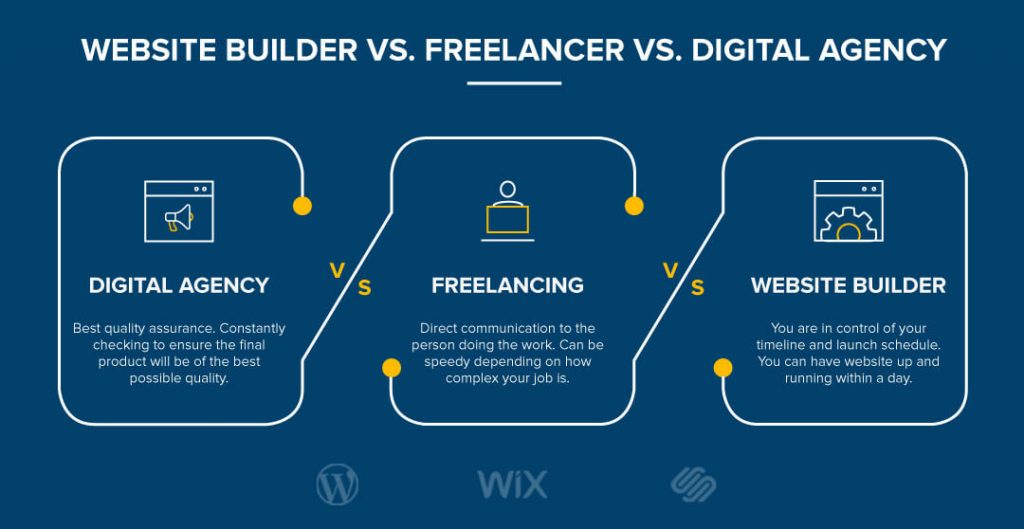Top 5 Website Design Best Practices for the Home Services Industry

Stephanie Patti
Project Manager

The Home Services industry is notoriously competitive, and it can be quite expensive to acquire new customers. With cost per click on Google Ads often exceeding $40, and the cost per lead getting as high as $100, it is important to make sure your website is user-friendly, and fully optimized for conversions. While you might be experts in your field, you might not be so well-versed in the latest best practices for website design. So, how can you make your plumbing, HVAC, or construction company’s website stand out from the crowd and convert leads into life-long customers? Here are the top five website design trends for the Home Services industry.
Build Trust and Credibility
With so much competition, you want to make sure you instill trust and establish your credibility as a business right off the bat, and your website provides a perfect avenue to do this. There are many different ways to ensure that your customers never doubt your abilities, or their safety, when you’re visiting their home to perform a service. Be sure to include accreditation badges on your homepage, as well customer testimonials to establish social proof. If you have video testimonials – even better! You should also showcase your work. If you are able to leverage “before and after” photos, be sure to include a gallery page on your website and load it up with photos! You should also include an “About Us” page on your website, as well as photos of your team members. Adding these personalized touches shows your customers that you’re not just a run-of-the-mill plumber, you’re the best plumber in your area!
Responsive Website Design
It’s safe to say that the chances of a potential customer looking at your website on a mobile device are pretty high. That being said, it isn’t enough to just have any old website in the Home Services industry. You have to have an attractive website and it must be responsive across all devices. If your website is not user-friendly across all devices or does not allow a customer to call you from their phone directly from the website, there are likely at least five other plumbers in your area ready to take what could’ve been your customer. With the high cost per lead in your industry, you don’t want to waste your efforts! Customers should be able to navigate your website with ease and find what they’re looking for quickly, whether it’s on desktop or mobile.
Calls to action
Put yourself in your customers shoes for a moment. What triggers you to click on that “Sign Up Now” button when you’re scrolling through a website? Is it what the button says? Is it the color? Maybe it was placed right after the review section (after reading five or six raving reviews). That might be all that you needed to book that free consultation. CTAs play a significant role in converting site visitors into paying customers, so pay attention to where you put them on your website, their color and verbiage, and how many there are. Keep the word count down to one or two variations. For example, you can consistently use “Book Your Free Consultation” and “Get a Quote” consistently, rather than also mixing in “Call Now!” and “Fill out a Contact Form”. This ensures reinforcement in what you’d like your visitors to do. Keep your phone number on your website visible at all times by adding it to a “sticky” navigation bar, so even if a visitor is towards the middle of a page, they’re able to easily give you a ring once they realize how awesome you are! Another great tip is to include lots of negative space around the CTAs so that your visitors don’t get distracted with clutter. And be sure to add a “Click to Call” button for the mobile users out there too.
Easy-to-Use Contact Forms
More and more customers prefer to use “Book Online” options rather than having to call and schedule an appointment for maintenance work to be done on their home. If you offer free consultations or are positioned to be able to send technicians to customers’ homes on a regular basis, allowing customers to easily book appointments online can be a game-changer. The method of online booking should be easy to complete and, of course, mobile friendly. Your contact forms should be prominently displayed on your website, and be appropriately linked from your CTAs. Keep your forms simple to use both on desktop and mobile, but also comprehensive enough for you to have the information your customer will need ready for when you speak to them. This may be as simple as “explain your problem” or as detailed as giving several options that will help you determine what could potentially be wrong with an appliance, for example.
Service Blocks
Your site visitors are likely on your website because they have a problem and are looking for someone to fix it. Odds are, they may not even know exactly what the problem is because most of us don’t know why our refrigerator isn’t running, we just know we want an appliance repair technician that we trust to come to our home and fix it! Make sure that the services you offer are clearly stated on your homepage as well as in subsequent service-oriented pages. You don’t want a customer going to your competitor because they weren’t able to quickly see that you provided the service they needed. Include this service block section higher up on your homepage, where you can use images that describe the service, and then link that to a dedicated service page. Differentiate your service block on your homepage with a contrasting color to make it stand out. This is also a great place to include that before and after photo gallery that we mentioned before.
 Free
Consultation
Free
Consultation Free
Google Ads Audit
Free
Google Ads Audit







